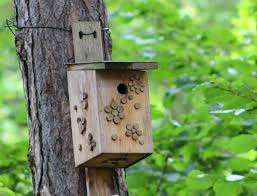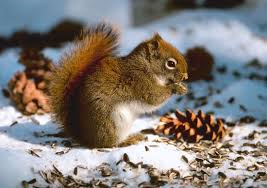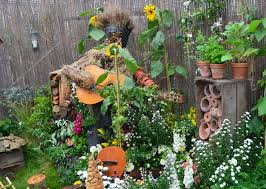As autumn settles in and temperatures drop, many people assume that wildlife disappears from their gardens. However, if your garden is well-prepared for the winter months, you can help ensure that animals have the shelter and food they need, and they may even stick around to offer natural pest control and pollination in the coming year.
Shelter for Wildlife in Winter
The simplest way to support wildlife during the cold months is by avoiding a too-neat garden. While tidying up is common in late fall, cutting back every stem and clearing debris can leave little shelter for insects, birds, and mammals.
Instead of removing fallen leaves, consider leaving them as a protective blanket. Leaves provide warmth and cover for creatures such as frogs, who help control pests like slugs. Piles of twigs, branches, or stones can serve as perfect hideouts for insects like ladybugs and lacewings. You don’t have to display these piles in the center of your garden; instead, tuck them behind shrubs or in secluded corners.
Additionally, deadwood can be an attractive and functional feature. Create an inviting bed by stacking logs and twigs beneath deciduous trees and planting winter-flowering bulbs and woodland plants such as primroses and ferns around them.

Deciduous trees and hedges also provide shelter and allow light to filter through, enabling plants to thrive underneath while offering protection to wildlife. When leaves fall, they can be gathered into piles or left on garden borders to insulate the soil.
Feeding Wildlife During Winter
In addition to shelter, wildlife needs food. Even hibernating animals may wake up briefly and require a caloric boost to sustain them through the winter months. To support wildlife, ensure your garden features winter-flowering plants that provide much-needed nectar. Snowdrops, witch hazel, winter aconites, and forsythia are excellent choices.
Evergreens such as pyracantha, cotoneaster, and ivy produce berries that will attract birds, while the dense foliage offers a great spot for foraging insects. Avoid pruning shrubs and hedges too early, as the seeds and fruit left behind are vital food sources.

You can also leave seedheads on plants like alliums, honesty, teasel, and sunflowers standing throughout winter. These seedheads provide sustenance for birds like finches and sparrows, while adding beauty to the garden when dusted with frost. If you have fruit trees, consider leaving fallen fruit on the ground for birds and small mammals to forage.
Water is another often overlooked element of a wildlife-friendly garden. If you don’t have a pond, consider installing one, even a small one like an old tin bath or barrel. Ensure it has a shallow end so wildlife can climb out if they fall in. If your pond freezes, break the ice by carefully placing a pan of hot water on top, allowing air to reach the wildlife beneath.
A Wildlife-Friendly Garden All Year Round
By planning your garden with wildlife in mind, you can help local creatures weather the winter months. A garden with shelter, food sources, and water is a haven for wildlife, and your efforts will be repaid in the spring with a natural balance of pest control and pollination. When it’s time to tidy up, you’ll have the satisfaction of knowing your garden helped sustain local wildlife all year long.
